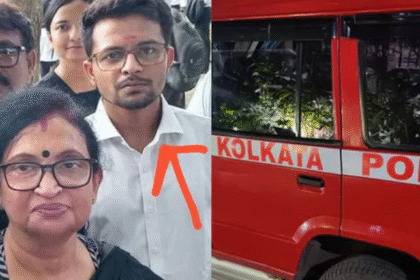The Anatomy of a Daily Gridlock — Understanding Thane’s Traffic Crisis from Anand Nagar to Manpada
Introduction: A City in Standstill
At the break of dawn and again at dusk, the city of Thane — a major urban extension of Mumbai — transforms into a sprawling sea of horns, halted engines, and frustration. Nowhere is this transformation more vivid than in the stretch from Anand Nagar to Manpada, where residents face a daily urban nightmare: a traffic gridlock that refuses to ease. The absence of traffic police, non-functioning traffic signals, and a staggering increase in vehicular load have turned this corridor into a war zone on wheels.
For thousands of commuters, students, emergency vehicles, and delivery agents, the journey through this zone is not merely time-consuming — it is debilitating. The crisis not only highlights an administrative blind spot but also presents a serious question: What happens when urban growth outpaces urban governance?
The Geography of the Chaos
The stretch from Anand Nagar to Manpada in Thane West spans a vital east-west traffic artery that feeds major residential areas like Hiranandani Estate, Waghbil, and Brahmand. It also connects to key commercial hubs and educational institutions, and thus sees a high volume of traffic from early morning till late at night.
What makes this stretch particularly vulnerable to traffic snarls is its layout. The road, flanked by narrow internal lanes, flyovers, and underpasses, serves as a funnel for both local and transit vehicles. The presence of multiple bottlenecks — such as the Manpada signal junction, the service roads near Tikuji-Ni-Wadi, and the sharp turns near Hiranandani — leads to a domino effect whenever even a single traffic signal malfunctions.
The Collapse of Enforcement
A key reason for the deterioration in traffic conditions has been the absence of traffic police at critical junctions. During peak hours, the sheer volume of vehicles demands manual regulation — something no amount of automated signaling alone can manage. Yet residents report that not a single traffic warden is present during high-congestion hours.
Thane’s traffic police have often cited manpower shortages, insufficient budgets, and deployment overload due to political or VIP movements as reasons for this neglect. But for the local population, these are excuses, not explanations.
The Signal That Never Turns Green
Beyond human enforcement, the traffic signal infrastructure in the Anand Nagar–Manpada corridor is a textbook case of systemic apathy. Signals are either entirely absent, non-functional, or hopelessly outdated. Many are poorly calibrated, with green lights lasting just 10–15 seconds regardless of the traffic density.
In several key junctions — including the often-criticized Manpada junction — signals remain switched off during rush hour, leading to chaotic vehicle pileups and frequent near-miss accidents.
Pedestrian crossings have become hazardous zones where footpath users dart across multi-lane roads, often dodging buses and trucks.
Public Outcry and Institutional Silence — The Missing Accountability in Thane’s Urban Planning
Voices from the Ground — Citizens Speak Out
For months, local residents have taken to social media platforms such as X (formerly Twitter), Instagram, and Reddit to highlight the severity of the situation. Viral videos showing mile-long traffic snarls, ambulances stuck in congestion, and children arriving late to school are not just visual testimonials — they are desperate pleas for action.
Influential citizen groups like the Thane Residents Forum, local housing societies, and even school authorities have sent written complaints to municipal and traffic authorities. Yet, in most cases, they have received either automated acknowledgements or vague promises of “investigation.”
An online petition titled “Fix Anand Nagar to Manpada Traffic Now” gained over 25,000 signatures in just one week. Despite this groundswell of concern, there has been no comprehensive action plan from either the Thane Municipal Corporation (TMC) or the Traffic Police Department.
Digital Chaos — The Role of Technology in Highlighting Dysfunction
In an ironic twist, the same digital infrastructure that has failed to manage the traffic — such as malfunctioning smart signals — is being used by citizens to expose administrative failure. Google Maps heatmaps show consistent red zones throughout the corridor for nearly 8–10 hours daily. Mobile traffic apps have become essential survival tools for locals trying to navigate the mayhem.
Further, local digital news platforms and YouTube creators have started crowd-sourcing data on congestion patterns and accident hotspots. Their findings routinely contradict official claims that “traffic is under control.”
Bureaucratic Tangle — Where Is the Leadership?
Accountability in the Thane traffic crisis appears to be a ghost. The TMC cites lack of state-level budget allocation. The Traffic Police blames infrastructure constraints. The urban planning department remains conspicuously silent.
An RTI (Right to Information) query filed by a civic activist revealed that Thane has just one traffic constable per 8,000 vehicles — a ratio far below even conservative recommendations. The number of trained traffic engineers employed by the city? Zero.
Several town planners argue that Thane is witnessing the classic consequences of unregulated urban sprawl: housing and commercial construction are booming, but road expansion, parking management, and mass transit planning are missing from the blueprint.
The Economic and Psychological Toll
Beyond inconvenience, the traffic snarls from Anand Nagar to Manpada are causing measurable harm. Studies by the Mumbai Metropolitan Region Development Authority (MMRDA) show that average commute times in Thane have doubled in the last three years.
Fuel wastage, loss of man-hours, and rising road rage incidents are piling up unseen costs. Delivery companies report increasing operational delays, while schools are adjusting their timetables because students consistently arrive late.
Mental health professionals note a spike in stress-related complaints among daily commuters — from migraines and anxiety to aggression. For elderly citizens and parents of young children, each commute is an ordeal.
Also Read : Fattah-1 Shockwave: Iran’s Hypersonic Breakthrough Poised to Redefine Israel Conflict







